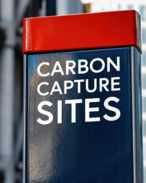This article is 17 years old. Images might not display.
The project would be the first commercial scale use of Cool Energy’s CryoCell cryogenic gas processing technology to capture and allow cost-effective storage of carbon dioxide. According to the three companies, this would enable efficient carbon geo-sequestration, not only providing a ‘clean’ product but also potentially realising a value for carbon capture of CO2 contained in Cooper Basin natural gas.
“Initial screening studies by our consultants indicate the plant is economically viable,” Great Artesian managing director Andy Carroll said.
“The feasibility study should be completed this month and a plant could be operating in 2009.”
Subject to results of the feasibility study and adequacy of gas reserves, the three companies will consider building a 20 million cubic feet of gas per day (20MMcfd) processing plant to produce sales gas, LPG and condensate for supply to market, as well as liquid CO2 that could be stored underground.
“Cool Energy’s technology has been proven in field trials over the past two years at Arc Energy’s Xyris Gas Field in the Perth Basin in Western Australia,” the companies said in a statement.
Early laboratory work to develop the process at WA’s Curtin University of Technology was backed by Shell, which is now a shareholder in Cool Energy. Woodside Petroleum also has been involved in the field trials.
Cool Energy has said this technology provides a strategic advantage for Australia to reduce CO2 emissions and ultimately gives natural gas very strong ‘green’ credentials in a decarbonised energy future.
Great Artesian and Beach Petroleum are joint venture partners in two significant PEL 106 discoveries, the Middleton-1 well that achieved a gas flow rate of 11MMcfd last year, and in the Udacha-1 gas discovery. The two companies would aim to be founding contributors of raw gas feedstock, with other producers able to toll their gas through the plant.
Great Artesian and Beach are also joint venture partners in the adjacent PEL 91.






















